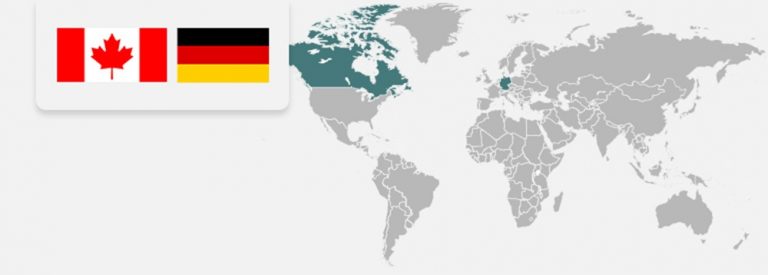
Germany has expressed interest in strengthening ties with Canada as a response to the escalating trade tensions caused by U.S. tariffs, which German Vice Chancellor Robert Habeck has described as “madness.” This sentiment emerged prominently during Habeck’s visit to the Hannover Messe trade fair in 2025, where Canada was featured as the partner country. At the event, Habeck highlighted the potential for enhanced EU-Canada collaboration, especially in light of the U.S. imposing steep tariffs on imports, including a 25% levy on Canadian goods and additional tariffs on steel and aluminum.
He suggested that the European Union could serve as an alternative partner for Canada, particularly as both regions face the economic uncertainty brought by U.S. protectionist policies under President Donald Trump. This perspective aligns with broader efforts by both Germany and Canada to diversify trade relationships and reduce reliance on the U.S. market amidst ongoing tariff disputes. Both Germany and Canada could reduce their dependence on the U.S. market by deepening bilateral trade. The EU-Canada Comprehensive Economic and Trade Agreement (CETA), already in place, provides a framework for tariff-free access to most goods, which could be leveraged further.
This might lead to increased exports of German machinery, vehicles, and chemicals to Canada, and Canadian energy resources, critical minerals, and agricultural products to the EU. U.S. tariffs disrupt North American and transatlantic supply chains, particularly in industries like automotive and steel. Closer Germany-Canada collaboration could foster alternative supply networks, ensuring stability for manufacturers and reducing costs passed onto consumers. German firms, facing uncertainty in the U.S., might redirect investments to Canada, which offers a stable, resource-rich economy. Conversely, Canadian companies could see the EU as a larger market to offset losses from U.S. tariffs.
Register for Tekedia Mini-MBA edition 17 (June 9 – Sept 6, 2025) today for early bird discounts. Do annual for access to Blucera.com.
Tekedia AI in Business Masterclass opens registrations.
Join Tekedia Capital Syndicate and co-invest in great global startups.
Register to become a better CEO or Director with Tekedia CEO & Director Program.
Pressure on U.S. Economy: If this shift gains momentum, it could weaken U.S. economic leverage, as two of its major trading partners pivot away. This might force a reevaluation of U.S. tariff policies, though it risks escalating trade wars in the short term. A closer Germany-Canada relationship could bolster the broader EU-Canada partnership, reinforcing a bloc of like-minded nations committed to free trade and multilateralism in contrast to U.S. unilateralism. This move might strain U.S.-Germany and U.S.-Canada relations further, especially under a Trump administration prioritizing “America First.” It could widen the rift in NATO and G7 dynamics, where economic cooperation underpins political unity.
A successful Germany-Canada pivot could inspire other nations to seek alternatives to U.S.-centric trade, potentially undermining the dominance of the U.S. dollar and its economic influence. Canada’s vast reserves of critical minerals (like lithium and rare earths) and energy resources (natural gas, hydrogen potential) align with Germany’s green transition goals. This could accelerate joint projects in sustainable tech, reducing Europe’s reliance on Russian or Chinese supplies. Amid rising global uncertainty—U.S. isolationism, China’s assertiveness, and Russia’s aggression—Germany and Canada could position themselves as reliable middle powers, fostering a rules-based international order.
This partnership might serve as a model for resisting protectionist trends, encouraging other nations to double down on open markets rather than retreating into economic nationalism. Stronger Germany-Canada ties could provoke harsher U.S. measures, like additional tariffs or diplomatic pushback, complicating the calculus for both nations. Building new trade frameworks or redirecting supply chains takes time, leaving both economies vulnerable to immediate tariff impacts. In Germany, industries tied to U.S. markets might resist; in Canada, proximity and economic integration with the U.S. could limit how far Ottawa pivots.


